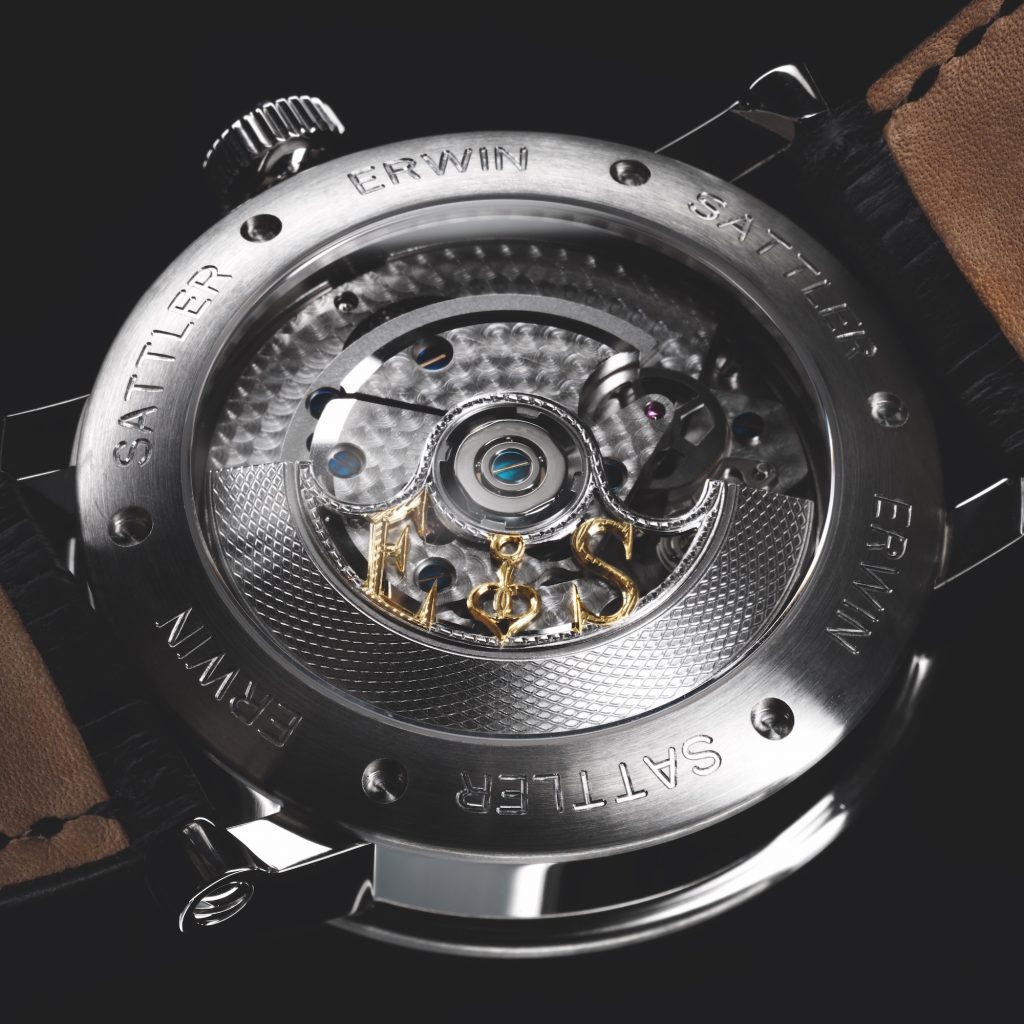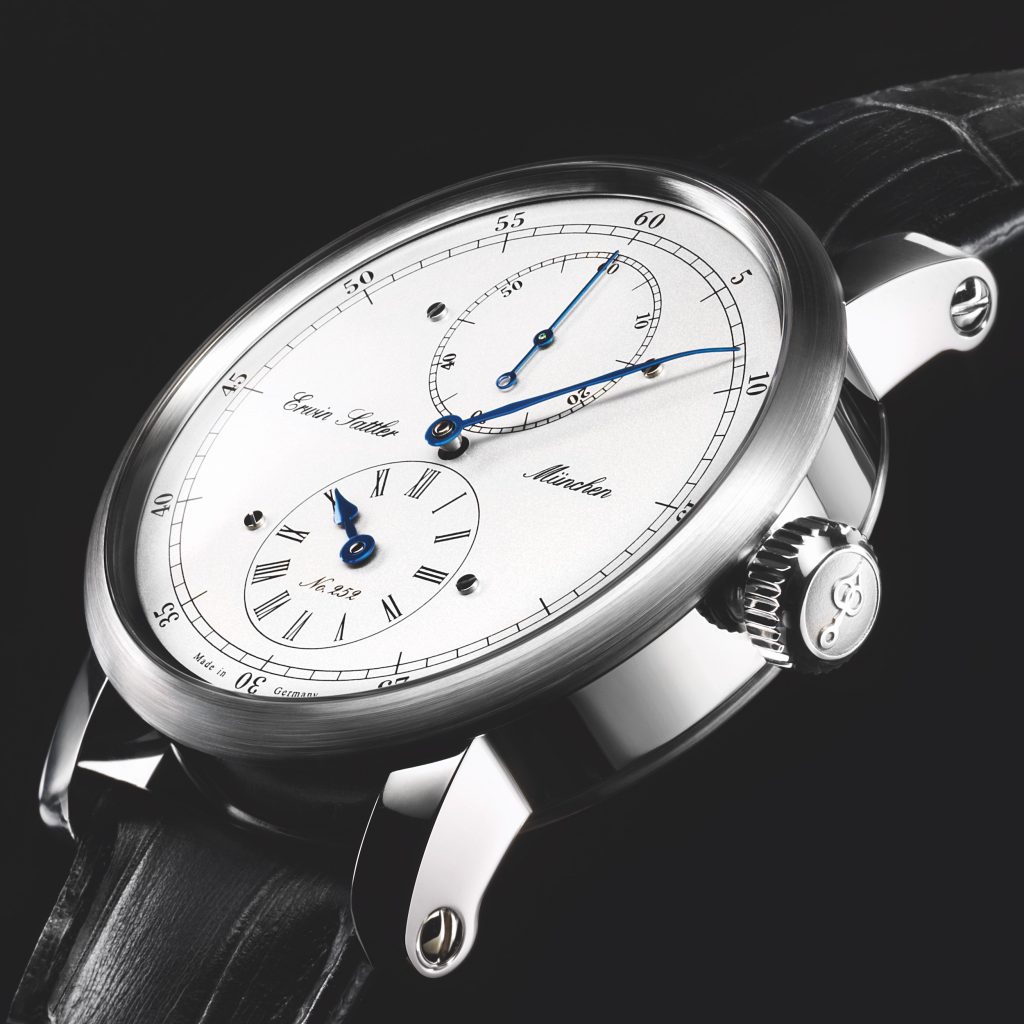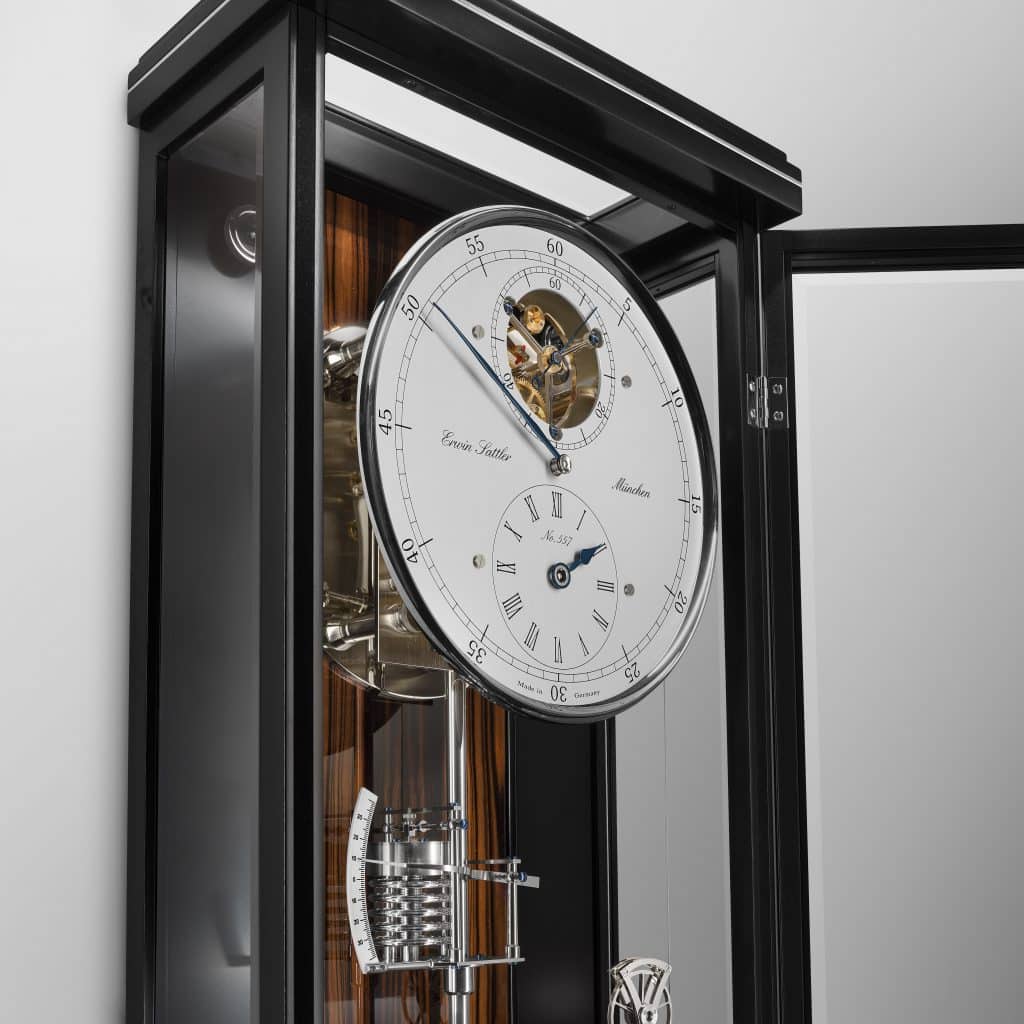The Jumping Second – An Exceptionally Exclusive Complication
Pendulum clocks always have it …. the second hand that jumps from one index to the next, completely in time with the pendulum belonging to the clock. The length of a pendulum and thus its frequency determines the number of steps or jumps of the second hand per revolution, i.e. per minute. Long pendulums – few jumps, short pendulums – many jumps.
With the seconds pendulum, as its name suggests, this effect is most balanced. For each beat of the pendulum, the second hand takes one step, i.e. exactly 60 steps per minute. This is, so to speak, the absolute “master version”!
In the field of watches, this is completely different. Here, the second hand makes many small steps due to the high frequency of the oscillator, i.e. the balance wheel. To be precise, at a frequency of 18000 oscillations per hour, 300 steps per minute, i.e. 5 per second. You could think that the hand glides…. Nowadays, 28800 oscillations per hour are the norm at watches, which means 480 steps per minute and 8 per second.
Let’s have look at the complication of the jumping second. Originating from the desire to be able to read off the seconds accurately, innovative watchmakers began early on to reduce the many small jumps of the second hand to the number 60. In 1754, Jean Romilly, who was born in Geneva and lived in Paris, was the first to achieve this. His watch was the ancestor of stopwatches, which made it possible to stop the second hand and thus measure time intervals to the second. The watchmaker Jean-Moise Pouzait also took up this challenge and developed this mechanism further in the direction of the chronograph we know today.
This very brief excursion into historical development already shows that the idea of the jumping seconds hand was already dormant in the minds of resourceful watchmakers at an early stage.
In modern times, however, since jumping second hands can be found in every simple quartz watch, this complication has almost been forgotten. One reason for this is surely that the value of a timepiece is defined by its mechanical movement and the almost gliding second hand. Accordingly, the jumping second stands for a quartz movement and thus also for a lower demand on the “engine” of a wristwatch.
In 2008, on the occasion of the 50th anniversary of the grand watch manufacturer Erwin Sattler, the first wristwatch in the comprehensive collection was presented. Who else but a pendulum clock manufacturer with the specialty “precision second pendulum clocks” would have been predestined to take up the complication of the jumping second again! Thus, the direct relationship between the seconds pendulum clocks and the first wristwatch of the manufacture is immediately apparent. In this way, the familiar look of the large wall clocks is discreetly and elegantly projected onto the wrist of the wristwatch owner.
This project was realized with the Austrian master watchmaker Richard Habring, whose design found its way into the “Regulateur Classica Secunda” in a modified form.
The basic idea of the construction is the conversion of the almost jerk-free rotation of the fourth wheel into a second display wheel jumping 60 times per minute. This process is carried out with the aid of a tilting drive, a detent spring and a star wheel. While the tilting gear is in fixed engagement with the fourth wheel on one side, its other (movable) side runs on the second “fourth wheel” connected in parallel with the star wheel. While the star wheel is held by the detent spring, the tilting gear moves on until it disengages and then jumps again exactly (defined by the star wheel and the associated detent spring) one 60th of a pitch further. This very complex mechanism has its peculiarities and also pitfalls and therefore must be meticulously adjusted by specialized watchmakers. The use of another intermediate wheel and a second hand wheel serves in particular to redirect the jumping movement to another position defined in the movement. This is the only way to achieve the conversion to jumping seconds at the 12 o’clock position.
To this day, the “Regulateur Classica Secunda” model, which is individually numbered on the dial, has a permanent place in the portfolio of the grand watch manufacturer. It still inspires watch lovers from all over the world who are looking for something special and have the highest demands on quality and craftsmanship of a product.
Post from











